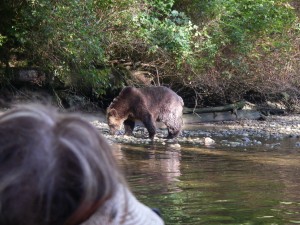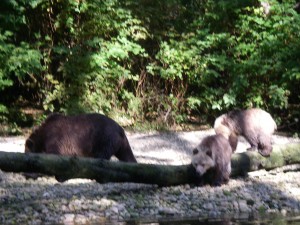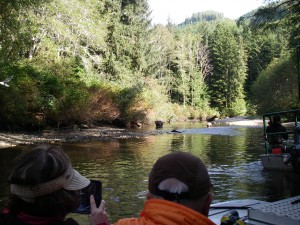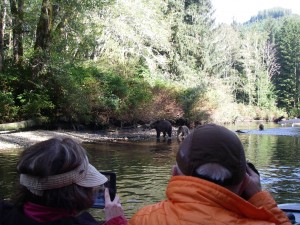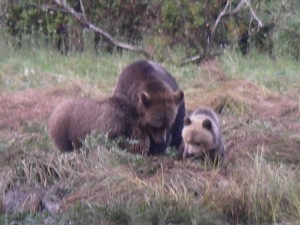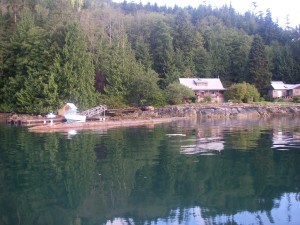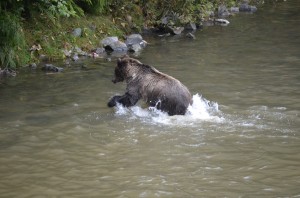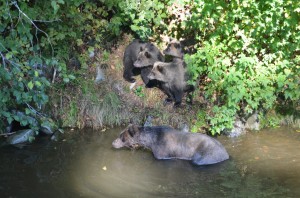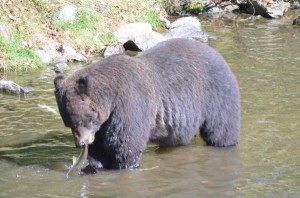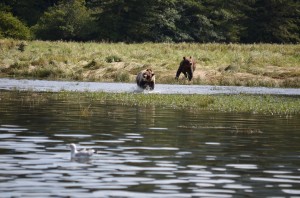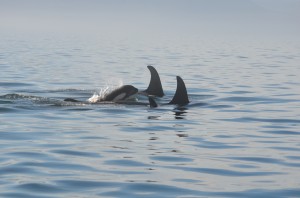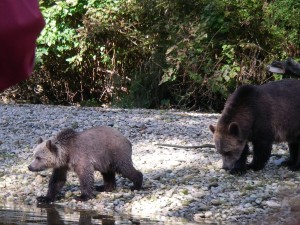
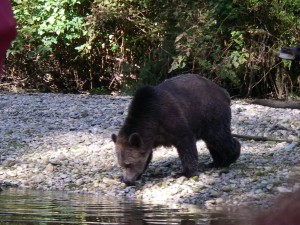
The mother grizzly and cubs have climbed over the log and are about to enter the river just behind the boat. If you look over the previous photos in this series of postings you will notice the grizzly did not make eye contact by looking toward the boats – staring a bear in the eyes is a sign of aggression. And the guests were cautioned that it was ok to glance and take pictures but to avoid “bug eyed staring”. The mother had her head down while the cubs would occasionally glance toward the boats when a camera was making noise. …. more tomorrow
